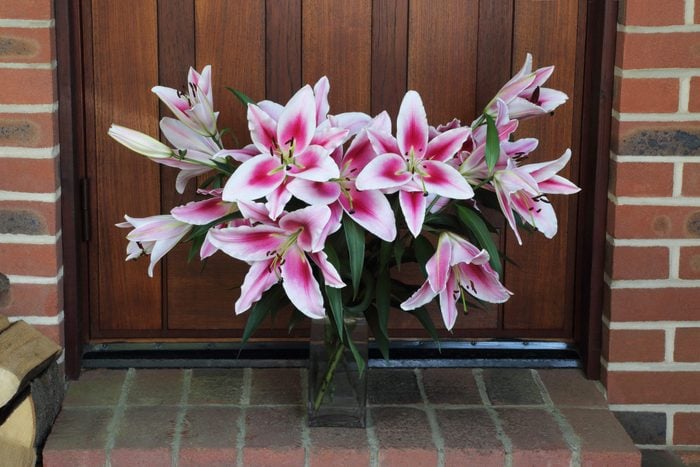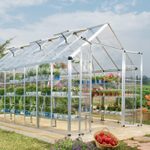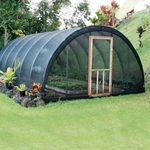Tips for Buying Garden Plants Online

Buying live garden plants online is different than buying non-perishable goods. Here are 10 things you need to know before you shop.
It’s easy to buy just about anything online, from the cars we drive to the clothes we wear. Live plants are no exception.
Some people live where there isn’t a garden center within 100 miles. Others can only find time to shop for plants late at night after everyone else has gone to sleep.
Buying plants online is a major convenience, plus you can find some one-of-a-kind varieties you won’t see in most stores.
However, before you begin, there are some things you should be aware of. Here are 10 tips to ensure your online plant-buying experience is a success:
On This Page
Order at the Right Time
Garden plants are seasonal. Not all are available at the same time of year, so you’ll need to learn which types to look for in the appropriate seasons.
Generally, the sooner you place your order, the more likely you are to find what you need in stock. Once an item is sold out, you will usually have to wait until the following year to try and purchase it again.
- Order spring blooming bulbs from early summer through fall, for fall planting.
- Order summer blooming bulbs from early fall through winter, for fall and spring planting.
- Order seeds from January through early spring, for late winter and spring sowing.
- Order annuals, perennials, trees and shrubs in winter, for spring shipping or in summer for fall shipping.
Check the ship date of your order to make sure your plants will arrive in the appropriate planting season. Most online plant companies will send them at the proper time. But some will ship anything you order immediately, which may leave you stuck with plants you can’t use.
Looking for more helpful tips for buying your plants online? Here’s how to determine the price of a plant.
Shop for Unique Plants From Specialty Growers
Standard flats of flowering annuals can be purchased at any garden center in the spring, so don’t bother ordering those online. Instead, look to specialty growers who focus on specific species you aren’t likely to find locally.
MrMaple.com sells hundreds of varieties of Japanese maple trees exclusively by mail order. B&D Lilies offers bulbs from award-winning breeders. Daffodil varieties that date to the 1800s are sold online by Old House Gardens Heirloom Bulbs. Unique varieties of organic vegetable, herb and flower seeds can be delivered to your door by Select Seeds.
Know Your Zone
Unlike your local garden centers, which only stock plants appropriate for your climate, online sellers service the whole country. Not everything on their website will grow where you live. That’s why it’s important to know which U.S. Department of Agriculture Plant Hardiness Zone you live in, so you can look specifically for items that will grow in your climate.
Experienced gardeners sometimes intentionally purchase plants from online sellers knowing they’re not rated for their hardiness zone. They may have a special place to overwinter them or might be willing to take the risk that the plant may not survive. We call this “cheating your zone,” which is essentially trying to beat Mother Nature at her game. Not surprisingly, she usually wins.
Read the Reviews
Most online sellers post customer reviews, so be sure to read them if you’re ordering for the first time. Also, seek out reviews on independent sites like Google and Yelp. Your fellow plant collectors may be willing to share their experiences of buying plants online, too.
Keep in mind they’re reviewing live plants, so user error may account for some of the poor experiences.
Ask yourself if, after reading the reviews and guarantees, the seller appears to be reputable. Is this someone selling plants they’ve dug out of their backyard, or is this an established greenhouse required to adhere to USDA regulations?
Check the Location of the Seller
When you search for plants online, sellers from all over the world will come up in the results. If you live in the U.S., always buy from an American company because USDA regulations prohibit individuals from shipping live plants across the U.S. border.
Growers are required to complete extensive inspections and mountains of paperwork to be allowed to ship from outside the U.S. These government regulations protect our country against the importation of foreign pests and diseases.
The “About” page on a seller’s site should clearly state where they’re located. Another way to verify they’re U.S.-based is to check if their prices are in U.S. dollars and if they accept payment that way.
Verify the Accuracy of the Plant Variety
If you come across a plant you’d like to buy but have never seen before, do a quick search on Google Images. If all the photos there look similar to the seller’s, you’ll know it’s accurate.
This is an easy way to spot photos embellished to the point of inaccuracy. It prevents the disappointment of ordering what you thought was a hot pink lily that actually blooms a washed-out pink.
Determine the Plant Size You Will Receive
Generally, when you buy plants online, you should expect to receive a smaller plant than your local garden center offers. People who aren’t accustomed to buying plants online are commonly disappointed when they open the box after waiting months for their plants to arrive, only to find their new tree is a one-foot-tall whip instead of a six-foot-tall mature specimen.
Before you place the first item into your online shopping cart, scour the website to find out the sizes of the plants they’re selling. If the cost is high for a small plant, it might not be worth your time.
Check the Seller’s Guarantee
The guarantee for live plants varies tremendously by vendor. Large greenhouses can accommodate greater numbers of losses from claimed plants and may have a more generous guarantee than smaller sellers offer.
Oftentimes, when the seller knows they don’t have enough stock to replace plants, they’ll ask you to plant what you receive and monitor its growth. Usually, when a plant is damaged in shipment, it will recover over time. You might be happier with this outcome rather than a credit, which leaves you with cash but no plants.
Plant sellers will not ask you to return any plants. Once the plant leaves the seller’s greenhouse, it can’t be brought back because of pest and disease control protocols. Instead, they’ll ask you to send a few photographs to verify the damage, so be sure to snap a few before tossing out the plant.
Expect High Shipping Costs
Amazon and other giant retailers trained many of us to expect free shipping for just about everything, whether it’s a new couch or a pack of paper towels. Don’t expect free shipping on live plants. Be prepared to pay up to 50 percent of the total order for shipping.
High shipping costs drive many plant buyers to shop at their local garden centers rather than online. If you can buy a plant locally, do it. But if there’s something you can’t live without and you’ll only find it online, be prepared to pay a premium.
Why the high cost? Live plants are often transported on more expensive temperature-controlled trucks and expedited schedules. They require special packaging to mitigate damage, and they’re heavy. All these factors add to the cost but are necessary to ensure your plant arrives in good shape.
Do a Test Run
Before placing a large plant order with a company you’ve never done business with, do a test run. Purchase one or two items to check their condition and quality upon arrival.
If there was a problem with your order, was the seller responsive when you contacted them? Was the issue avoidable? If you feel the value isn’t there, move on to a different online seller.



